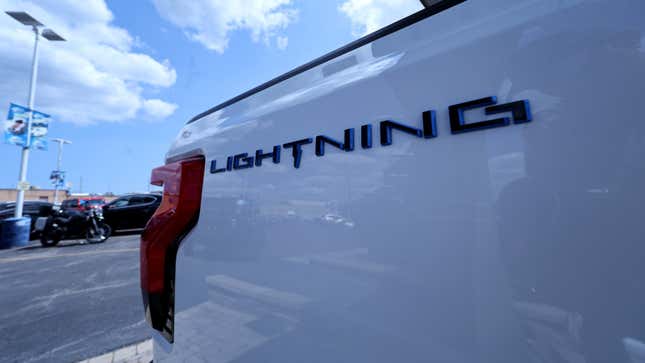Ford has once again announced a change in its electric vehicle strategy after canceling its plans for a three-row EV in favor of much smaller, more affordable models that might actually be able to make money.
Ford canned its plans for a three-row EV after admitting that it probably wouldn’t be “profitable in the first 12 months of launch,” reports Automotive News. The decision was reached over fears about the costs required to develop a large enough battery pack and efficient motors to give a heavier three-row car the kind of range American motorists demand:
“This is really about us being nimble and listening to responses from our customers,” [CFO John] Lawler said in a media briefing. “We looked where the segment was evolving, the amount of competition, the customer needs, and then, the size of the battery that needs to go in a pure EV, the cost structure, the pricing, we could not put together a vehicle that met our requirements to be profitable in the first 12 months of launch.”
As well as the three-row, Ford has also pushed back plans for a next-generation full-size electric pickup truck, which would replace the current F-150 Lightning model. The new model, dubbed “Project T3″ by Ford, will now be delayed by up to 18 months as part of a reduction in spending on fully electric models. The truck’s new launch date in 2027 means Ford will be able to make use of its lower-cost battery technology as well as other “cost breakthroughs” that could develop while the EV sector continues to evolve, Ford explained in a statement.
If there are two cars that you’d have thought would sell like hot cakes for Ford, it’s a three-row SUV and a pickup truck. In the past, these categories have been real winners for the Blue Oval, with the three-row Explorer being Ford’s best-selling SUV in 2023 and the F-Series trucks holding strong as the best-selling trucks in America for multiple decades.

Instead of these historically profitable segments, what cars will Ford instead make electric? Well, the answer to that appears to be smaller models that could even offer a “range of propulsion options,” reports Automotive News:
In the near term, Ford’s EV plans are now focused on smaller, more affordable products. The first vehicle on a new platform it’s developing for that purpose will be a midsize pickup coming in 2027, Ford said.
Ford also reiterated plans to bring a next-generation commercial van to Ohio Assembly in 2026.
The pivot is a pretty sizable shift for Ford, which has up until this point pledged full support for its electric ambitions. The shift will bring with it a big cost for the Blue Oval, with Automotive News warning that the shifting EV targets could cost Ford up to $1.9 billion, including a $400 million charge related to crossovers that it canceled after previously postponing from 2025.
Ford isn’t alone in shifting its targets on EVs this year. After rising battery-powered car sales failed to live up to many automakers’ expectations, businesses across America have shifted targets and production milestones. General Motors previously slashed 50,000 cars from its EV targets and even Tesla has backed away from its goal of building 20 million EVs.







